JOURNEY WITH JESSICA
Welcoming Service Dogs in Churches.
Disabled people who use service dogs are used to being unwelcome and discriminated against in all aspects of their life— medical appointments, stores, recreational events, transportation, and housing. Churches can be especially anxiety provoking because they are exempt from the ADA and can legally ban entrance. However, God’s call to radical hospitality compels us to welcome all people, and that should include their service dogs.
According to the ADA, “Service dogs are individually trained to do work or perform tasks for an individual with a disability.” The disability may be visible or invisible and the tasks can vary from guiding a blind person to alerting to a medical event to picking up objects. Dogs can be any size or breed. Best practice is to trust the person to know if a service dog is the best accommodation for them. Refrain from asking any personal medical questions. Like you, we come to church to worship, not educate or justify our existence.
When welcoming a service dog user, talk to the person and assure them they and their companion are welcome. Please avoid petting, feeding, making eye contact, or talking to the dog. They are working and those distractions can interrupt their work. Although counterintuitive, don’t ask the dog’s name. Some partners may share the name, but repeating the dog’s name can be distracting. Ask the handler if they need any assistance or accommodations for worship as sometimes pews are spaced too close for comfort, so offer alternate seating. Some might need a secluded place to retreat to if their dog alerts to a medical need. Others might wish to have communion brought to them instead of coming up to receive. Give options; but allow choice. Expect them to know how to care for their dog and their own medical needs.
Some people get service dogs from a program. Many charge $30,000 or more and other programs offer dogs free of charge for specific disabilities but have a multi-year waitlist. Some handlers choose to train their own service dog. Having a supportive community before receiving a service dog is essential for the success of the team and this can include fundraising, assuring your support, or being a place where a service dog in-training can learn. As someone who has been on long wait lists, please refrain from asking, “When are you getting your dog?” every time you meet. We don’t know, and we are even more anxious to meet our dog than you are!
Regardless of how well the dog is trained, they are still dogs and get plenty of play and love when off-duty. Especially during the first six months of a partnership, expect a learning curve as the team bonds and establishes a routine. If the dog is a distraction, talk to the handler and offer support before suggesting they leave. At some point, due to age, illness, or behavior, the service dog will retire. The decision to re-home on retirement is made in careful consultation with professionals, considering the best situation for both dog and person. The loss of any animal is heartbreaking, but the loss of a service dog is complicated by a loss of safety and independence. These are vulnerable times, please be supportive and refrain from judgement.
As a service dog partner for over twenty years having worked with four different dogs, each of my dogs has been very different from one another and yet, they have been the right dog for me at that specific time in my life. The relationship is one of complete interdependence. I have to fully trust my service dog to safely navigate the world, and in turn, they depend on me for their complete care, leadership, and protection. It is a sacred relationship, and I am honored to have been entrusted with these amazing animals.
For more information, please visit these links:
Service Dogs with Pat (Part 1) – The Accessible Altar
Watch “Pick of the Litter” on Amazon Prime Video
Categorised in: Jessica Blog
